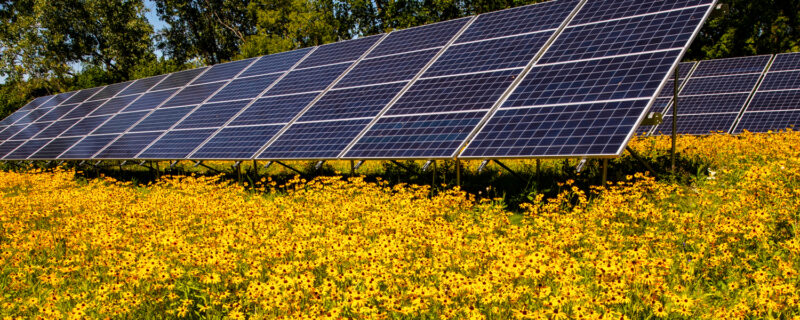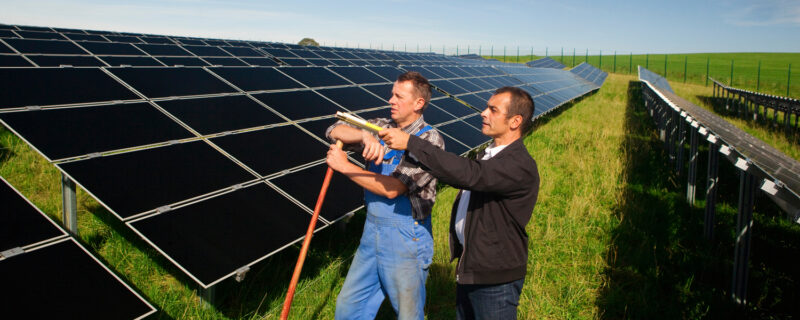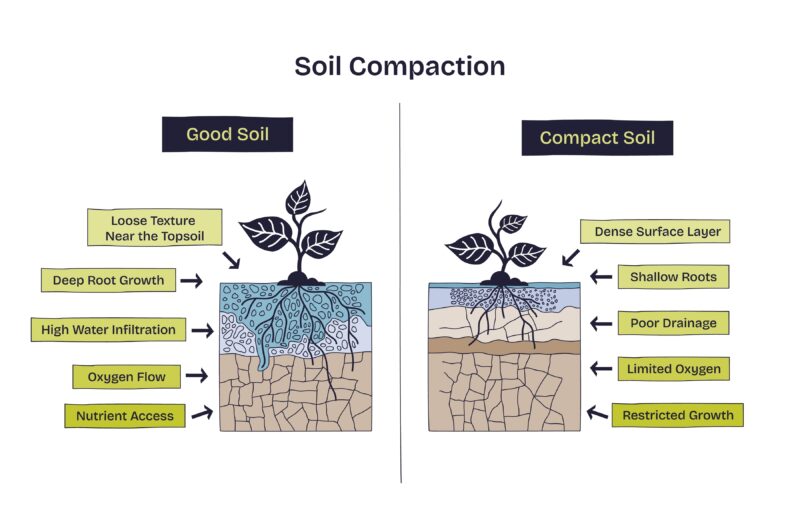
In many Illinois communities, the conversation around solar often centers on a key question: How will the solar installation affect the soil and water that supports some of America’s most productive farmland? As environmental advocates, Prairie Rivers Network shares these concerns, and we are committed to ensuring clean energy is developed in a way that protects our natural resources.
That’s why we invited the Great Plains Institute (GPI) to lead a Resilient Communities webinar to discuss their groundbreaking report, “Photovoltaic Stormwater Management Research and Testing (PV-SMaRT)”. The research provides a guide for solar farms on best practices for stormwater management. It also provides communities a framework for ensuring solar farms are developed in a way that protects our soil, water, and prime farmland for future generations.
During this webinar, GPI walked us through best practices for solar stormwater management protocols and highlighted their free PV-SMaRT Solar Farm Runoff Calculator, which can be used to estimate stormwater runoff from ground-mounted solar photovoltaic sites. The team also shared exciting new research, PV-SUCCESS, which explores the ecosystem services (e.g., clean water, pollinator habitat) of solar projects. The forthcoming findings of this research will provide guidance for incorporating these environmental co-benefits into large-scale solar projects.
Photovoltaic Stormwater Management Research and Testing (PV-SMaRT)

GPI conducted the PV-SMaRT research across five states to identify post-construction stormwater management solar best practices. The team measured and modeled infiltration and runoff under a variety of real-world conditions to better understand current stormwater standards for solar. These studies were essential, since most jurisdictions were treating ground-mounted solar arrays as impervious surfaces in local stormwater and water quality permitting, leading to higher costs, slower development, and poor water quality outcomes. The PV-SMaRT project was led by an advisory Water Quality Task Force (WQTF), which used the field research data from the five different solar arrays in separate states to prove their model was correct, and to collect real world data.
The research model concluded that on solar sites with perennial vegetation runoff increases on average:
- By 14% with solar arrays compared to without solar
- By 38% for row crops vs mature prairie
- By 98% with compacted vs loose soil in full sun
The research validated the model, and resulted in an innovative runoff calculator to estimate stormwater runoff from ground-mounted solar photovoltaic sites for pre-construction and post-construction site-specific conditions. The licensed software can be accessed free of charge from the University of Minnesota’s Technologies page if you’re an academic, non-profit, or governmental organization. The PV-SMaRT solar runoff calculator enables developers, engineers, local decision makers, and state regulators to work from a common foundation of knowledge and science to improve water quality outcomes for host communities. This software can also provide scientific insights, which can allow for more accurate long-term strategic planning.
Best Practices for Solar Projects

In Illinois, solar projects are required to work with the Bureau of Land and Water Resources to negotiate an Agricultural Impact Mitigation Agreement (AIMA), which ensures that the land affected by those projects is restored to its pre-construction capabilities.
The AIMA, in addition to GPI’s research and tools, can provide useful resources for communities. According to GPI’s report, if designed appropriately, large-scale solar can provide nature-based local benefits to their host communities, such as surface and drinking water protection and restoration, habitat development, carbon sequestration, and soil health improvements. Since most solar development occurs in rural areas, where agriculture is the primary land use and is exempt from the Clean Water Act, there is an opportunity for ‘ecosystem services’, or green infrastructure, to reduce the pressure put on rural communities to achieve water quality goals.
According to the GPI’s past and ongoing research, sustainable solar development should begin with proper site selection, ensuring the soil is deep and loose, and that native seed selection aligns with the existing ecosystems. Specifically-selected native seed should be sown before construction, and construction should be done in a way to reduce soil compaction. After construction, the site should be de-compacted with a chisel as needed to ensure maximum infiltration. Lastly, the solar site should have a specific operating and management plan designed to ensure the soil’s bulk density targets are met throughout the site’s lifetime.
| Before Construction | During Construction | After Construction |
| Select sites with deep soils Clear site Seed native vegetation | Establish minimum space between solar panels Practice Low Impact Development (LID) | De-compact soil (as needed) Develop O&M (ensuring soils target bulk density) |
Incorporating these best practices offers host communities stackable benefits, such as habitat creation, water quality improvements, pollinator habitats, improved soil health, and carbon sequestration. By ensuring large scale solar arrays are installed with the local soil and water in mind, we are simultaneously ensuring our rich farmland is improved while it rests and is able to be returned to production once the solar array is decommissioned.
What’s Next for Solar Research? Photovoltaics Supporting Cultural and Community EcoSystem Services (PV-SuCCESS)
GPI is currently working on another report, PV-SuCCESS, to build on PV-SMaRT and help communities incorporate these ecosystem services into their future solar developments. The GPI research team has been compiling host community ecosystem service benefits from across the country and creating a clear path for integrating research findings into local decision-making processes. The report will aim to develop a decision-making framework to help developers, host communities, and local regulators incorporate community ecosystem services benefits (such as water and soil quality improvements) into large-scale solar developments.
Follow the GPI team as the PV-SUCCESS is rolled out, and share these resources with your local leaders so that solar developments can positively contribute to local soil and water conservation.







